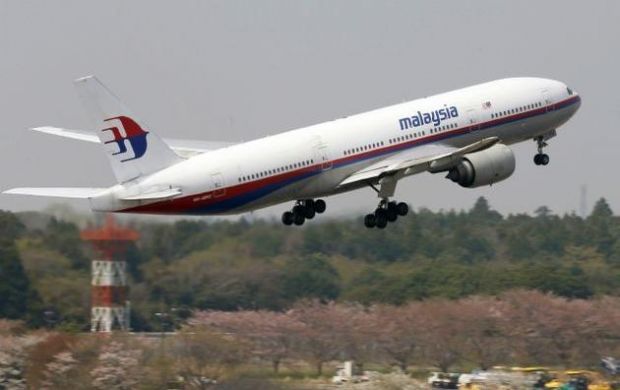Kuala Lumpur: The search for a missing Malaysian jet swung northwest towards the Andaman Sea on Wednesday, far from its intended flight path, exposing Malaysia to mounting criticism that its response was in disarray.
Vietnam scaled back its efforts to locate Malaysia Airlines flight 370, carrying 239 passengers, which had focused on the South China Sea where the jet last made contact on a journey between Kuala Lumpur and Beijing.
No trace of the plane has been found since it vanished on Saturday, and contradictory and incomplete information from Malaysian authorities has infuriated relatives enduring an unbearable wait for news of their loved ones.
“We are not going to leave any chance. We have to look at every possibility,” civil aviation chief Azharuddin Abdul Rahman told AFP, confirming the expansion to the Andaman Sea, which lies north of Indonesia’s Sumatra island.
He did not indicate whether the decision to expand the multi-nation hunt hundreds of kilometres (miles) to the northwest of the original search radius was based on any firm indications the plane might be there.
Confusing and contradictory
Authorities had earlier expanded the zone to the Malacca Strait off Malaysia’s west coast after citing radar data they said indicated a “possibility” the plane may have changed course from its intended flight path over the South China Sea.
But the shifting search areas have fuelled perceptions of official bungling.
Frustration mounted in Malaysia, with the country’s active social media and some press outlets turning from sympathy for families of relatives to anger over the fruitless search.
“The mood among Malaysians now is moving from patience in the search for the 239 people aboard the missing flight MH370 to embarrassment and anger over discrepancies about passengers, offloaded baggage and concealed information about its last known position,” Malaysian Insider, a leading news portal, said in a commentary.
Twitter users took aim at contradictory reports, and confusion over whether the jet had deviated from its intended course.
“If the Malaysian military did not see MH370 turn toward the Malacca Strait, then why the search? Who decided to look there and why?,” one comment said.
“I think Malaysia Airlines and the Malay government is trying to cover up or hide something about flight MH370,” wrote another.
The anger and embarrassment were compounded by a report aired in an Australian news programme of a past cockpit security breach involving the co-pilot on the missing jet.
Malaysia Airlines said Tuesday it was “shocked” over the report that First Officer Fariq Abdul Hamid, 27, along with a fellow pilot violated airline rules in 2011 by allowing two young South African women into their cockpit during a flight.
The report included photos of the women in the cockpit, with one appearing to show them posing with a man resembling Fariq. Passengers have been prohibited from entering cockpit during flights after the 9/11 attacks on the United States.
Analysts said pressure on Malaysian authorities could derail complicated search and rescue efforts.
“Public pressure may result in the command structure and unity of the search to crack. This is not what we want,” said Gerry Soejatman, an independent aviation analyst based in Jakarta.
“Once that cracks, information and ability to verify becomes a problem and reckless speculation will overwhelm common sense.”
Vietnam suspends air search
Vietnam, whose southern coast had been the focus of the recovery effort, said it had suspended its air search and scaled back sea operations as it waited for Malaysia to clarify the potential new direction of the multi-national hunt.
“We’ve decided to temporarily suspend some search and rescue activities, pending information from Malaysia,” deputy minister of transport Pham Quy Tieu said.
“We’ve asked Malaysian authorities twice, but so far they have not replied to us,” Tieu said, when asked about a media report that the plane had been detected over the Strait of Malacca.
“We informed Malaysia on the day we lost contact with the flight that we noticed the flight turned back west but Malaysia did not respond,” he added.
Malaysia’s air force reiterated on Wednesday it had not ruled out the possibility the Boeing 777 inexplicably changed course, but denied the report it had been detected in the Malacca Strait, far from its planned flight path.
“For the time being, it would not be appropriate… to issue any official conclusions as to the aircraft’s flight path until a high amount of certainty and verification is achieved,” Air Force chief General Rodzali Daud said in a statement.
“However all ongoing search operations are at the moment being conducted to cover all possible areas where the aircraft could have gone down in order to ensure no possibility is overlooked.”
Authorities have so far revealed no details on radar data they said indicated a possible “turn-back”.
The search zone shift is the latest twist in the mystery surrounding the plane. On Tuesday, Malaysian authorities said two men travelling on stolen passports appear to be Iranian illegal immigrants – easing fears of terrorism.
Malaysia’s national police chief Khalid Abu Bakar has said his officers are not ruling anything out but were now focusing on a possible hijacking, sabotage, or psychological or personal problems among passengers or crew.
The search operation grew to involve 42 ships and 35 aircraft as of Tuesday, from Southeast Asian countries, Australia, China, New Zealand and the United States.
China, which had 153 of its nationals on board the plane, said it would harness 10 satellites equipped with high-resolution imaging to help in the search.
Boeing said it was joining a US government team to try to unravel the mystery of what happened to its 777-200 plane.



